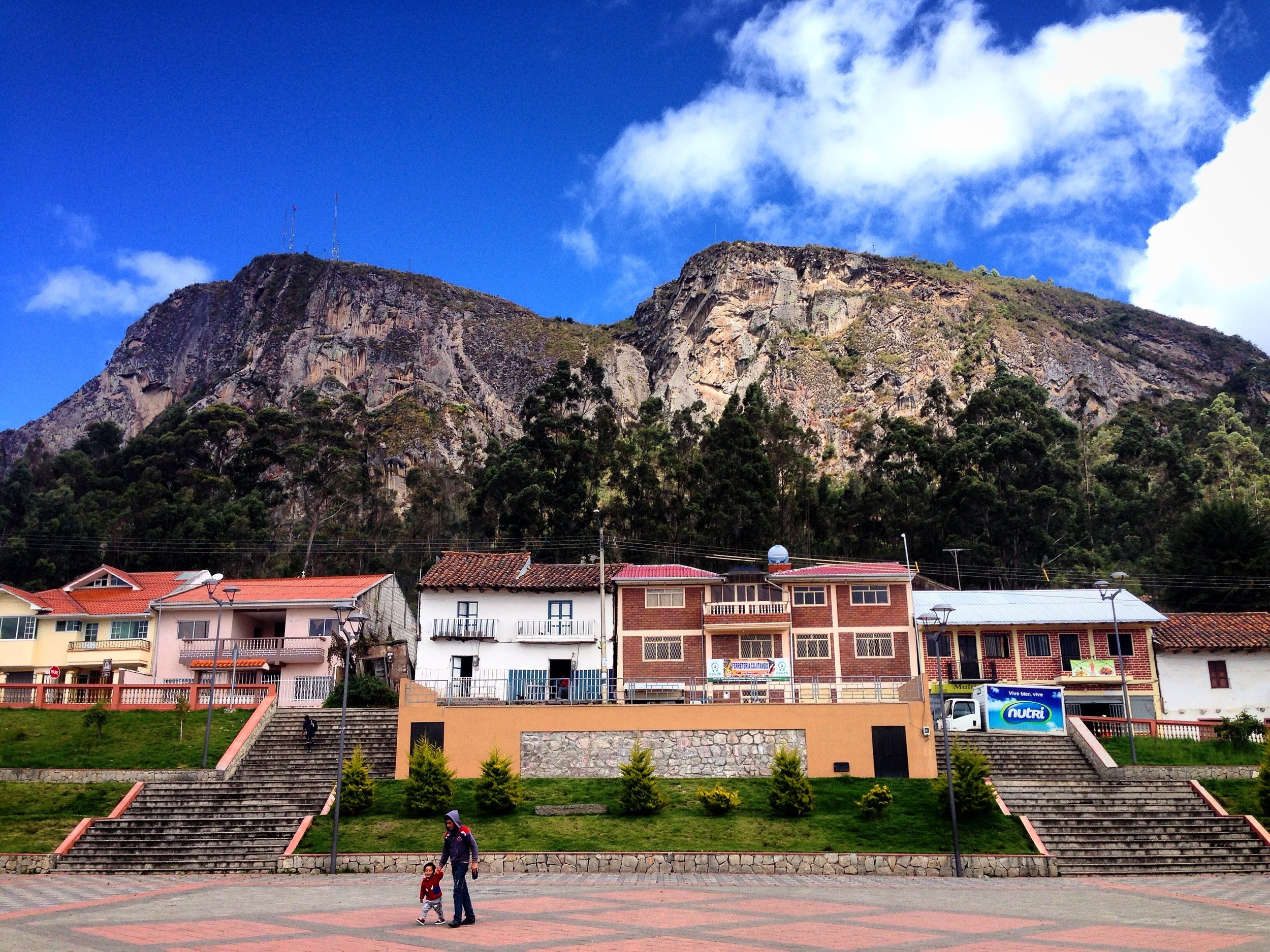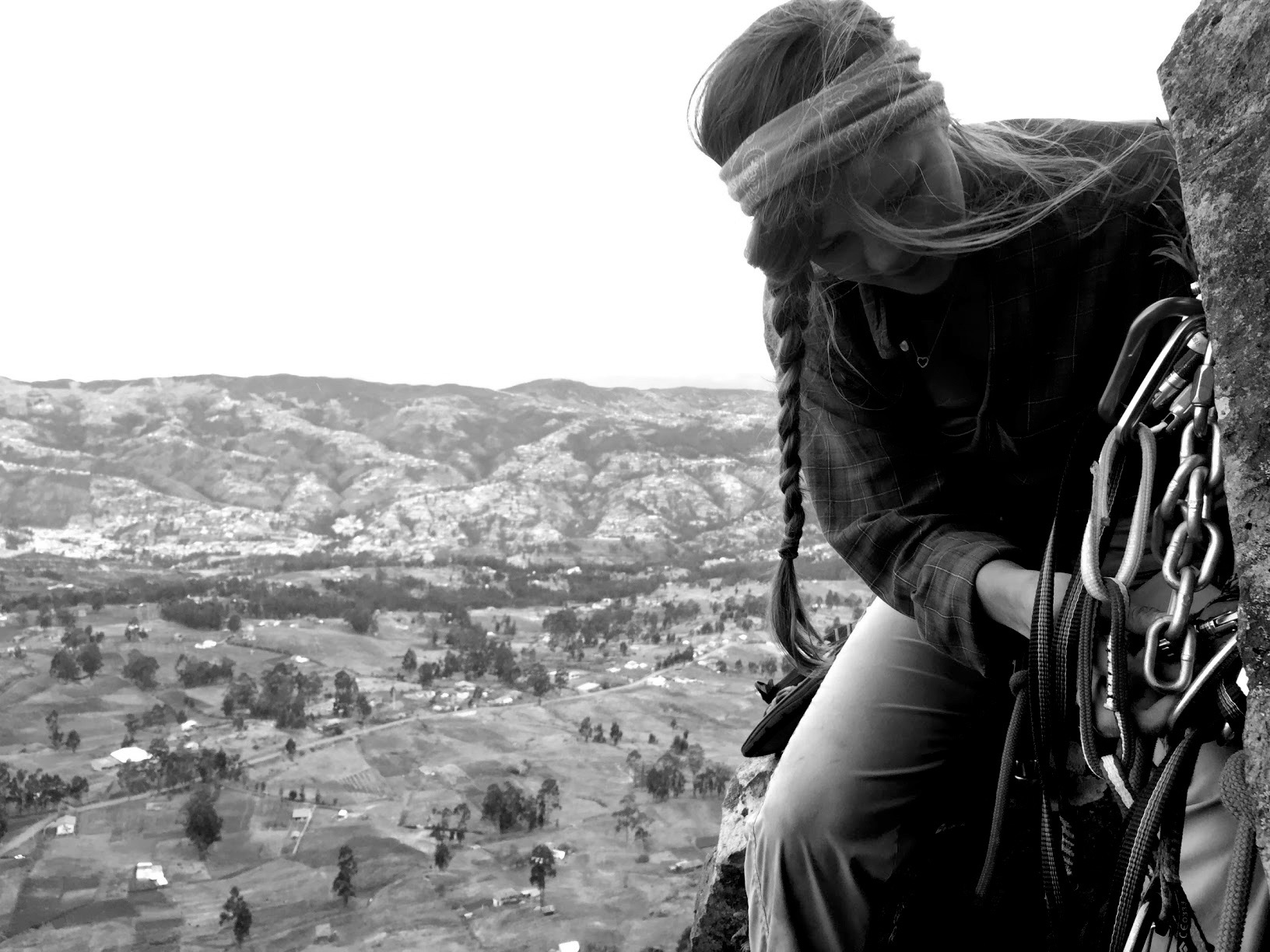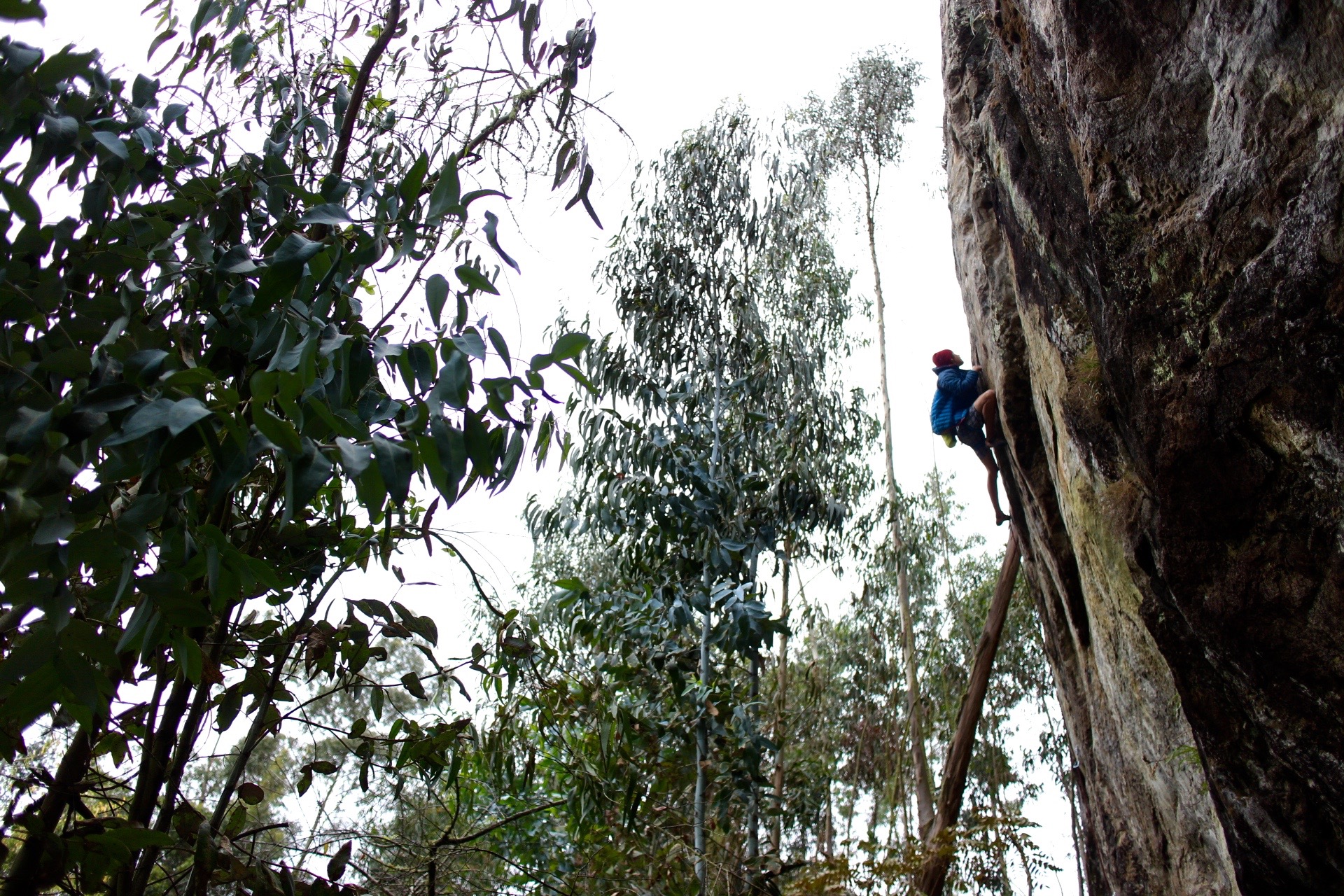Ecuador's Multi-Pitch Mecca: Clipping bolts in Cojitambo
 Cojitambo is is a tiny pueblito located just north of the city of Cuenca, southern Ecuador’s little Europe. There’s a big church, a small plaza, a lot of dogs, and a lot of climbing.
Cojitambo is is a tiny pueblito located just north of the city of Cuenca, southern Ecuador’s little Europe. There’s a big church, a small plaza, a lot of dogs, and a lot of climbing.
Shattered boulders litter Coji's landscape. The town's traditional occupation is shaping tiles from the rock long-scattered across its hillsides. It’s a bittersweet sight for boulderers in a sport climbing mecca, but the area’s most important faces remain intact.
The cerro of Cojitambo has 14 sections and around 180 routes, with pitches varying in length from 15 to 35 meters. Most routes are sport, but trad and mixed climbing have a place as well. The andesite rock, like that in much of Ecuador, tends toward footwork-intensive faces, though there is certainly burl to be found.
If you’re looking to climb multi-pitch sport in Ecuador, this is the place to do it. The area’s iconic route, Langarota, consists of 8 techy pitches between V and 6b (5.8 and 5.10c). If you climb here, you have to do it.
You may recall (or not) that becoming comfortable with multi-pitch climbing was one of my three-year climbing goals. But it turns out multi-pitch sport isn’t so different from single-pitch sport! I spent most of August in Cojitambo, and although I still wouldn’t really call myself a ~*sport climber*~, thanks to the graciousness of a few patient climbing partners I am now pretty confident trading pitches on longer climbs.
My favorite Coji climb, though, is just one pitch. It’s a 7c (5.12d) called Hecha La Digna, and it’s like a seven-bolt boulder problem on a shallow roof followed by a scary-techy face crux. I haven’t even clipped the chains yet, but this might be the most fun route I have ever tried. I get a little farther during every session, and my hope is to send it before leaving Ecuador.
 In August, I got to bring my new friend Anna up her first multipitch — the Ecua-epic Langarota!
In August, I got to bring my new friend Anna up her first multipitch — the Ecua-epic Langarota!
The best time to climb in Cojitambo is from December to March or July to September. You can climb at other times too, but you may get rained on.
You can camp all over Cojitambo, but generally it’s on private property, so make sure you ask permission from landowners first. Campfires are pretty much forbidden. There’s no fee to climb, but be respectful of the people who make their living on this land — stick to the trails, don’t trample the sheep’s grass, and leave the tile piles alone.
My preferred lodging is in the house of Juan Gabriel Carrasco. Juan Gabriel is, in my mind, the timeless gatekeeper of Cojitambo. He’s been climbing for forever and is one of the primary developers of the area. He drew the original topos by hand and has all the Coji-beta. He has a beautiful dog named Bilbo and shares his home with climbers at $10/night.
You can also stay in one of César Campoverde’s many climber-centric properties. Pedro Montezuma is another local legend whom I haven’t met but who also offers lodgings of some sort.
Phone numbers for these men are in Cuenca crusher Daniel Carrión’s new guide, which you should definitely buy. You can find it at climbing gyms in Quito and Cuenca, Monodedo shops, Juan Gabriel’s house, and probably other places. It’s $25 and contains the beta for seven sport crags in the south of Ecuador.
Cojitambans are generally welcoming to and curious about the climbers who visit their home. Try to support the local economy by buying your fruit, snacks, and beer in-town. Also be sure to stop by the panadería for a pan de chocolate and some conversation — the baker is a real sweetheart.
 Mateo eyes the crux on Hecha La Digna.
Mateo eyes the crux on Hecha La Digna.
Bus Directions to Cojitambo from Quito, Ecuador
First, bus toward Cuenca. This should cost $12-15 and take 7 to 12 hours. I recommend taking a night bus because they are faster and feel like a productive use of sleeping time.
When you get on the bus to Cuenca, tell the driver you want to get off in Azogues. Then make sure you don’t sleep through the stop in Azogues. From the Azogues terminal, take a 50-cent bus to Cojitambo.
If you do sleep through the Azogues stop, or if you just want to see Cuenca before you start climbing, or if you rejected the night-bus experience and flew straight into Cuenca, take a 75-cent bus from the Terminal Terrestre to Azogues. Take the 50-cent bus to Cojitambo, then climb on!